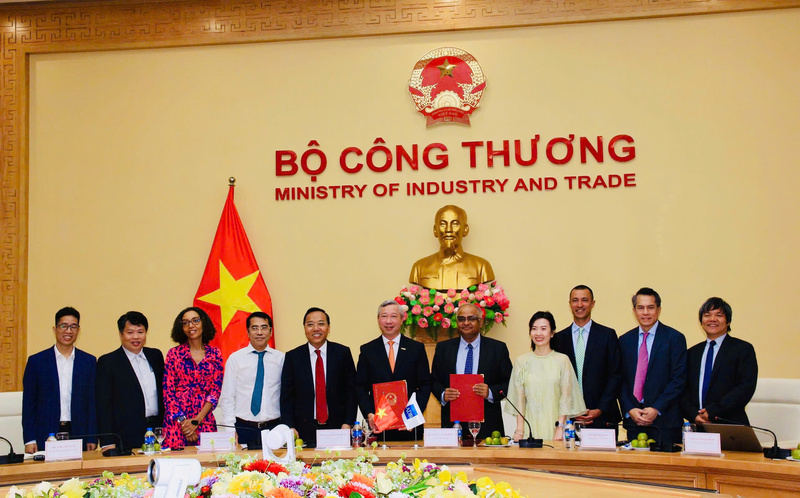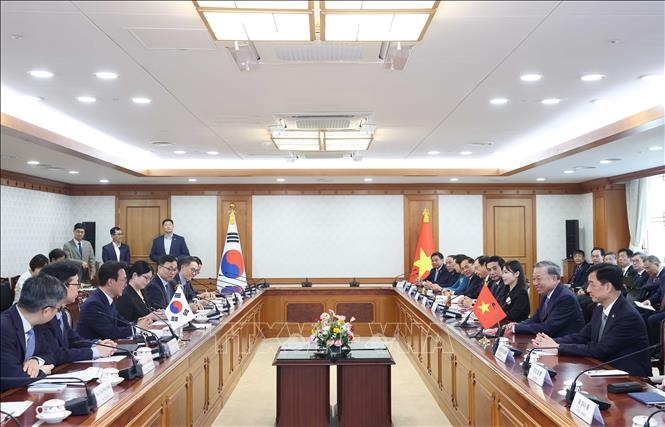
MoIT and ADB partner to advance green energy
19:05 | 23/03/2025 17:44 | 14/08/2025Cooperation
On January 7, the Hanoi Department of Transport proposed that the City People’s Committee invest in building 5 lightweight steel overpasses to solve congestion problems at the following intersections: Chau Van Liem - Le Quang Dao (Nam Tu Liem District); Co Linh - Thach Ban (Long Bien District); Hoang Minh Giam - Nguyen Tuan (Thanh Xuan District); Co Bi - Ngo Xuan Quang (Gia Lam District); and Nguyen Huy Nhuan - Ly Thanh Tong (Gia Lam District). According to the department, the traffic volume at these intersections is high during rush hours, plus the low awareness of the Traffic Law observance among some people... are the causes of serious traffic congestion in the inner city.
 |
| Hanoi will build five overpasses to reduce traffic congestion in the city - photo: Ngoc Hoa |
Faced with increasing traffic pressure, many believe that building overpasses at these intersections is one of the urgent solutions, contributing to solving the “black spots” of traffic congestion in Hanoi.
Earlier, two lightweight overpasses built in 2012 at Tay Son - Chua Boc and Lang Ha - Thai Ha (Dong Da District) intersections showed obvious effects as they helped solve traffic congestions in these areas. From the effectiveness of these first two projects, many other steel overpasses were also constructed in other districts of the city.
Sharing about the proposal to build 5 overpasses to reduce traffic congestion, traffic expert, Dr. Nguyen Xuan Thuy - former Director of the Traffic Publishing House, said that to ensure effectiveness of the overpasses, there must be solutions to adjust and control traffic flows, and organize the traffic well, especially during rush hours.
Pointing out the strengths of lightweight overpasses, the expert said that steel overpasses are not permanent bridges, so the construction and maintenance costs are low, the construction time is short, and with little impacts on the environment. Therefore, when needed, the works can be dismantled and moved to other locations.
Although it is believed that this is an effective solution to traffic congestion in the inner city, according to experts, the authorities need to consider carefully a suitable plan that meets requirements in terms of landscape and environment criteria, to avoid disturbing the urban landscape; at the same time, avoid wastes of hundreds of billions of dong for overpasses of low efficiency.
To reduce traffic congestion in the city, in addition to the construction of lightweight overpasses, in the past time, Hanoi has implemented various flexible solutions, such as removing traffic lights at some major intersections; developing public transport network... However, apart from efforts of the transport sector, synchronous and drastic coordination from relevant parties are also needed, particularly the consensus and support in raising people’s awareness of traffic. Most importantly, Hanoi needs to prioritize building synchronous and modern traffic infrastructure to deserve its status of the capital of the country.

19:05 | 23/03/2025 17:44 | 14/08/2025Cooperation

19:05 | 23/03/2025 14:18 | 14/08/2025Industry

19:05 | 23/03/2025 16:18 | 13/08/2025News and Events

19:05 | 23/03/2025 16:18 | 13/08/2025News and Events

19:05 | 23/03/2025 16:18 | 13/08/2025News and Events